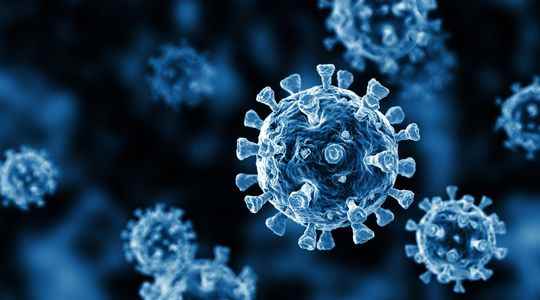Will we see the end of the tunnel? For two years, France has lived to the rhythm of epidemic waves interspersed with warlike and sometimes optimistic speeches. Currently, the health picture is difficult to read: if the number of positive cases continues to increase – and to beat records with more than 300,000 daily contaminations on the average of the last seven days – the pressure on the hospital and in particular the services of resuscitation stagnates. This week, the concern comes from the words of Professor Antoine Flahault, epidemiologist and director of the Institute of Global Health at the University of Geneva. The specialist affirms it: this very recent rebound in contamination could have been caused by a new variant of Covid-19 with the code name “BA.2” (“BA.1” for the original strain of the Omicron variant). It has been spotted in India and Singapore.
“The very nature of a virus is to mutate. Inevitably, there will be other variants. When it enters a cell, the virus makes millions of copies of itself and sometimes slightly different copies from those of departure. This is what leads to variants, “explains to L’Express Yannick Simonin, virologist and research professor at the University of Montpellier. In other words, as long as it continues to circulate, the virus will mutate. But the question is: how to prevent variants with high pandemic potential from emerging? Among the various mutants, it is necessary to distinguish those which are classified as “worrying” from the others which prove to be less dangerous. “For the moment, what worries are these relatively rapid evolutionary mechanisms which allow the emergence of variants whose level of virulence cannot be predicted”, continues Mylène Ogliastro, virologist and researcher at Inrae Montpellier. . According to the expert, the mutations of a virus do not mean that the variant will be less pathogenic.
“The important element for a virus is its transmission (…) On the other hand, virulence seems to be a ‘collateral damage’ linked more to dysregulations of our immune system and does not present any selective advantage for the virus since it was transmitted before these severe symptoms”, indicates the virologist. On this question, scientists are divided. More optimistic than his colleague, Yannick Simonin believes that we can imagine the new variants continuing in the direction of Omicron (more contagious and less pathogenic). “They will gradually adapt to humans.” The specialist explains that when a new virus arrives in a species, it gropes and mutates a lot. His conclusion: eventually, there will be fewer and fewer mutations. The virus will find a “balance” between the human and its way of spreading. “The word variant shouldn’t be scary. There may even be variants that would be beneficial – that is, even more contagious than Omicron, but less dangerous,” he continues.
“We must raise the level of immunity”
While the Omicron variant has taken over its predecessor in France, it could be difficult to dethrone it. Two elements could act as a barrier to a new variant: broad vaccination coverage – 43% of the population received its booster dose – and infections linked to the Omicron variant which confer broader immunity on the population. For a variant to emerge, it must benefit from a wide circulation of the virus – reduced by vaccination. “We have to raise the level of immunity”, resumes Mylène Ogliastro. Among the future plans envisaged, some experts believe that we could move towards a seasonal vaccination intended for the most fragile – a model modeled on that of the flu. “It is still a more stable virus. For the flu, the vaccine must be updated regularly, while that against Covid-19 made from the original strain is always effective”, adds Yannick Simonin.
This constitutes fertile ground for the new variant: low vaccination coverage as in Africa where the problem is a bit specific. Many HIV patients have a very weakened immune system. “The virus will stay in the body of these people for a long time. This gives the virus time to accumulate new mutations and have new variants”, describes Yannick Simonin. At that time, could a new variant find a place in our widely vaccinated population? “There is no reason to think that a new variant would escape immune protection. However, we cannot exclude anything,” replies the expert. In the meantime, it remains necessary to vaccinate unprotected populations. According to one study published on January 18 by scientists from the Center for Functional and Evolutionary Ecology (CNRS/University of Montpellier), the most appropriate strategy is to vaccinate older people.
“This both minimizes selection for a resistant variant and total mortality,” they write. In parallel with vaccination, we must continue to keep our eyes glued to the evolution of the virus. “It is necessary to ensure significant epidemio-surveillance like that which has been carried out at the global level so far and what has been done for a long time also for the influenza virus”, affirms Mylène Ogliastro. In order to avoid the spread of a variant with high pandemic potential, the health arsenal will have to be refined: development of innovative vaccines, tests and sequencing capacities to monitor the virus or even the use of artificial intelligence to identify the more dangerous mutants. This is what the French company, Instadeep, specialized in AI and big data, has decided to do: “Some 12,000 new sequences are deposited each week in international databases. No one can examine them all” , explained recently in The Express its leader, Karim Beguir. One thing is certain: the next variants are under close surveillance.
